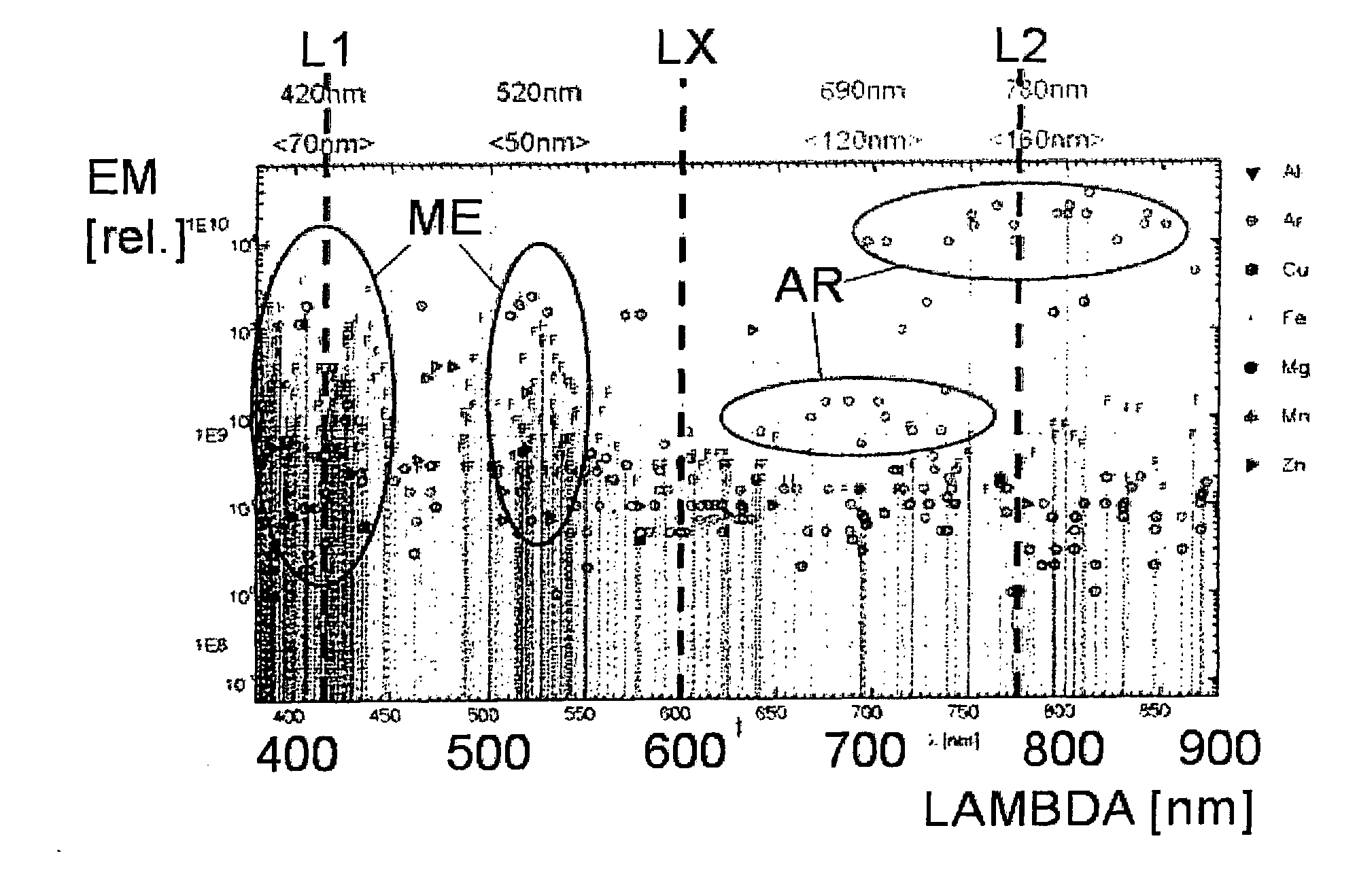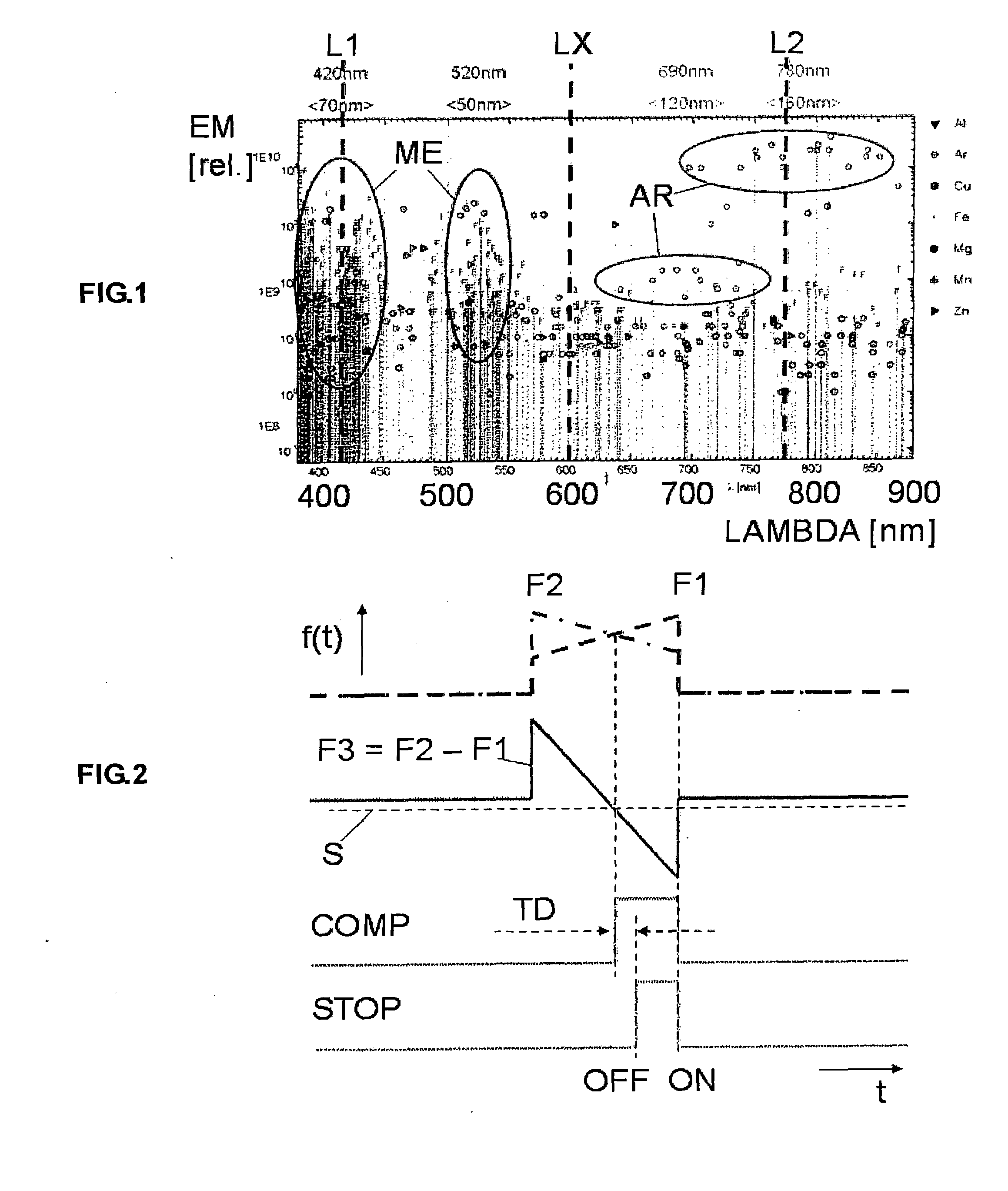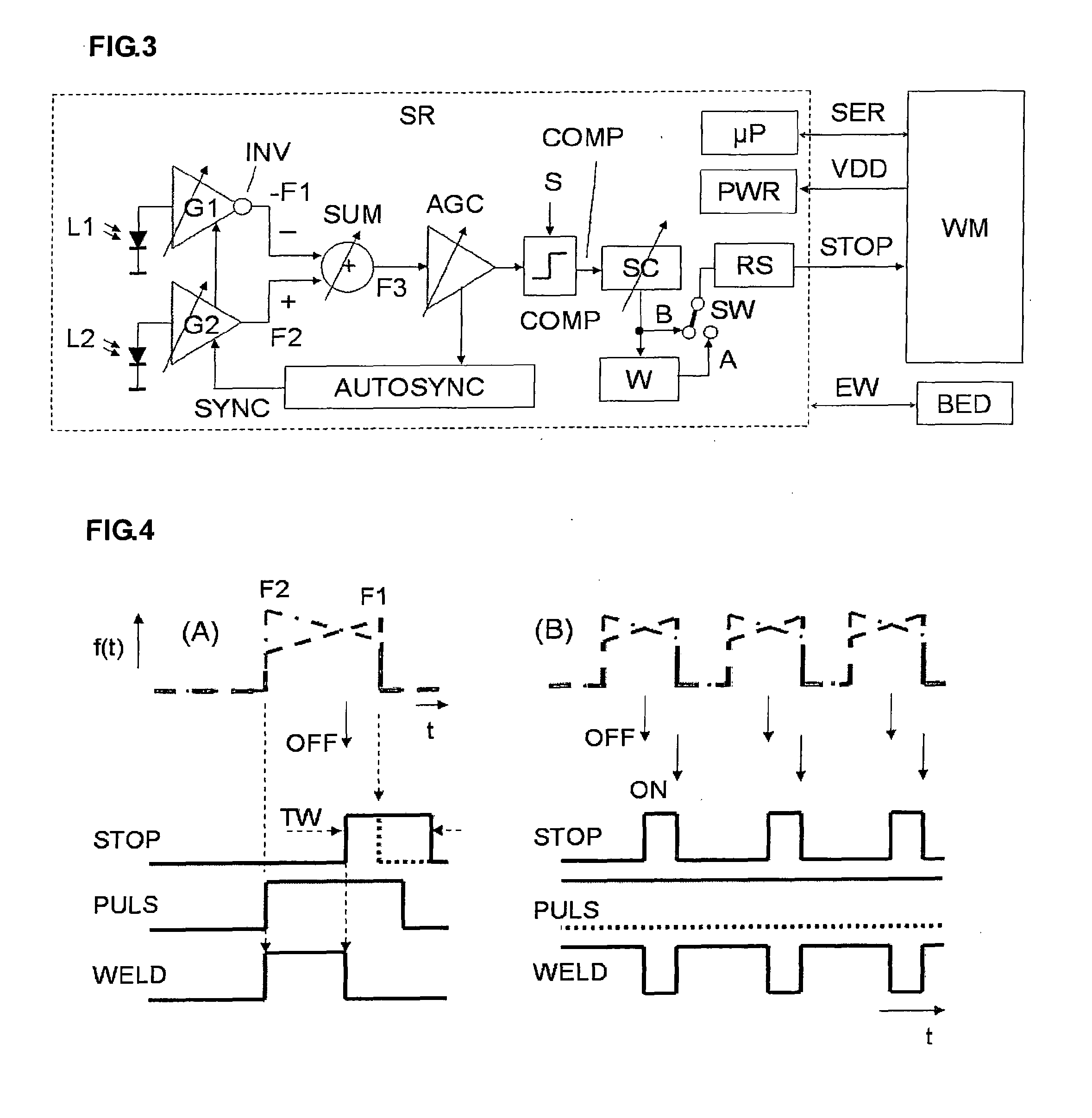Method For Regulating Energy Input of a Pulsed Arc Plasma During a Joining Process and Apparatus
- Summary
- Abstract
- Description
- Claims
- Application Information
AI Technical Summary
Benefits of technology
Problems solved by technology
Method used
Image
Examples
Embodiment Construction
[0074]FIG. 1 shows a typical pattern of spectral lines of metals ME to be welded or soldered, and of the protective gas argon AR with its relative emissions EM.
[0075]In certain ranges, prominent groups of lines in the emission are circled, which can be assigned to the metals or to the protective gas (or active gas). The relative width of these groups offers the opportunity of using relatively broadband photodiodes. It turns out that a partition is necessary in the range centred on the wavelength LX (approx. 600 nm), in order to obtain a typical time response of the metal lines on the left-hand side and that of the argon lines on the right-hand side. Here, maxima of the sensitivity of the two photodiodes may be chosen for metals at the wavelength L1 (here 420 nm) and for protective gas (argon) at the wavelength L2 (here 780 nm).
[0076]FIG. 2 explains the principles of the function of a spectral regulator with the aid of time functions f(t). The time function F1 to be assigned to the m...
PUM
| Property | Measurement | Unit |
|---|---|---|
| Temperature | aaaaa | aaaaa |
| Sensitivity | aaaaa | aaaaa |
| Energy | aaaaa | aaaaa |
Abstract
Description
Claims
Application Information
 Login to View More
Login to View More - R&D Engineer
- R&D Manager
- IP Professional
- Industry Leading Data Capabilities
- Powerful AI technology
- Patent DNA Extraction
Browse by: Latest US Patents, China's latest patents, Technical Efficacy Thesaurus, Application Domain, Technology Topic, Popular Technical Reports.
© 2024 PatSnap. All rights reserved.Legal|Privacy policy|Modern Slavery Act Transparency Statement|Sitemap|About US| Contact US: help@patsnap.com










